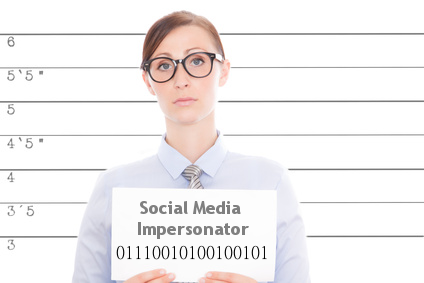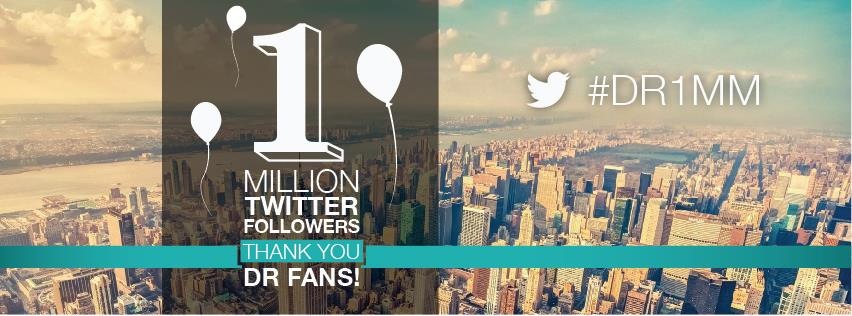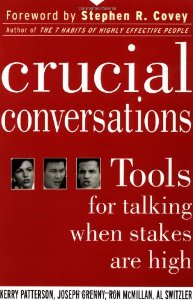Just about every business owner recognizes the importance of using social media. To that end, they arrange for web sites to be built, have accounts on all the major social networking sites, and regularly post information about what their businesses are offering and doing. While that’s fine, these efforts are still relying mainly on pushing information toward consumers and attempting to treat their responses like data. That’s where things need to change.
social media strategy
Should Social Media Outsourcing be Illegal? ~guest post via @BLichtenwalner
Many companies completely outsource social media management. These companies may have good reasons for this decision. Yet, when outsourced, social media communications misrepresent reality. In fact, is it possible that completely outsourcing your social media accounts should be outlawed? Below are a couple issues to consider:
Duane Reade Strategy Creates 1 Million+ Engaged Twitter Followers
~via Wired City… New York City drug store giant Duane Reade is connecting with more customers via social media.
Its Twitter fan base surpassed 1 million followers, a major milestone for the Walgreen-operated drug store chain among the drug, food and mass-arena segment. Duane Reade has raised its presence on Twitter more than 6,000 percent in the past year.
Customer Loyalty Management via the Customer Service Silo
All of your employees work in the marketing department, at least to some extent, and they need to understand the role they play. But to create a strong foundation for customer loyalty management, there are a few departments within your company that absolutely need to sync with marketing. Your customer service department is the most important.
Here are four ways you can leverage your customer service team to effectively manage customer loyalty, build relationships, and turn customers into fans. Think Return on Relationship… because there is no better time than when your customers reach out to you.
New York Times Bestseller On The Perils Of Social Media
Back in April I wrote an article about the ill-timed and extremely insensitive Tweets put forth by a brand: Epicurious Uses The Boston Marathon Tragedy To Cross That Line. It was of course not the first nor the last example of social media gone bad in the context of a brand and those entrusted with the marketing of it.
Today, however, I want to talk about when social media goes bad from a human perspective. You do remember humans, right? Oh sure, there’s autobots and other techno-related gizmos that will Tweet, post and Like on we humans’ behalf – at least I think there is?
But at the end of the day it is we humans who are traveling the highways and biways of social media on an ever-increasing pace.
Epicurious Uses The Boston Marathon Tragedy To Cross That Line
Two days ago. Just two days ago right here in these hallowed halls, as it were, I scribed a column entitled For Brands There’s A Fine Line Between Capitalism And Capitalization – At Least There Should Be. 
The article essentially spoke to the fact that some brands will do whatever it takes, regardless of such minor details as ethics and morals, to move their product, whatever said product may be. And that they will go right on doing what they’ve always done which is to essentially use any medium necessary – email, print, direct marketing, TV, radio, mobile and on and on to drive their message home to as many consumers they possibly can.
Seems I forgot to mention one medium: social media.
SlideShare: The Quiet Giant Of Content Marketing
Marketers and advertisers the world over are constantly trying to find the “next big thing.” The one thing that will allow them to stand out from the crowd. Back in the day of course it was TV, radio and direct mail or email for example. Then came the digital revolution and mobile marketing and social media marketing took center stage – and rightly so.
Today, it’s content marketing.
While all the aforementioned mediums remain and always will be key players in any integrated marketing communications campaign, clearly content marketing is the next big thing – at least for right now.
And a major tool in the content marketing arsenal may be one that many of you have heard of and visited, but perhaps have not used to date – SlideShare.
When It Comes To Social CEOs One Group Is The Clear Winner
There are many – myself included, who believe in the adage “it starts from the top down” when it comes to leadership in a company or business. I don’t care if it’s a professional sports team or a business that has just a few employees. How the leader of that company acts, thinks and carries his or herself on a daily basis goes a long way to ensuring the overall success or failure of that company.
And when it comes to the use of social media – or lack thereof, it appears one group of CEOs is not doing their part or carrying their load or whatever catch phrase you happen to prefer.
As a follow up to their report done earlier this year on CEOs and social media, Domo and CEO.com just released the findings of another report or study. However, unlike their earlier report which focused squarely on the CEOs of Fortune 500 companies, this one was “designed to compare and contrast social media habits among leaders of America’s largest companies (Fortune 500) and America’s fastest-growing companies (Inc. 500).”
Did You Hear The One About The Marketer Who Didn’t Use Pinterest?
Ok, I admit there’s no punch line to that query or maybe there is now that I think about it. The punch line would be ‘they were soon looking for another job.’
Now I know what all you marketers and brand managers and brand marketers and everyone out there is thinking ‘gee Steve, a little over dramatic wouldn’t you say? Are you really saying a marketer who doesn’t use Pinterest could be out of a job?’

Alright I admit, I have seen too many after school specials and Lifetime movies (hey, Tori Spelling is one underrated actress) so perhaps I was a tad melodramatic in implying or flat out stating that any marketer who doesn’t use Pinterest may soon find themselves updating their resume but,
Bah Humbug – Lack Of Mobile Integration Means Not So Happy Holidays For Brands
You know, there are some things in life that never cease to amaze. For instance, how is it after all these years of marriage (we’re approaching 20) I still somehow manage to do exactly the opposite of what my wife really wants me to do? You would think during the course of my marriage I would do onething the way she intended it to be done, yes?
Um, no.
Another thing that never ceases to me amaze me, as we approach the holiday season in the year 2012 is the fact that so many brands, still are not integrating their offline with their online marketing strategies.
“A report from global interactive marketing provider ExactTarget found more than half of America’s fastest growing retailers have yet to fully connect online and offline shopping experience, leaving shoppers unsatisfied with their shopping experience.”
 The live above is from a press release I received recently. The headline of the release was even more ominous: Research Finds a ‘Mobile Chasm’ Between Retailers, Consumers Heading into Holiday Shopping Season.
The live above is from a press release I received recently. The headline of the release was even more ominous: Research Finds a ‘Mobile Chasm’ Between Retailers, Consumers Heading into Holiday Shopping Season.
Wow. Anytime you throw the word “chasm” into a conversation and use it to describe any type of gap or hole, you know instantly that said gap or hole is as Mike Myers might say, friggin huge!
Jeff Rohrs, ExactTarget’s vice president of marketing research and education says as they gear up for the holidays, marketers need to “consider how consumers use their mobile phones while shopping,” adding “shoppers are turning to their phones for coupons, promotions and discounts, and marketers have a never-before-seen opportunity to transform these interactions into ongoing conversations that drive sales and repeat purchases.”
The press release also makes mention of a Forrester report from earlier this year which, among others, reported that:
- Twice as many consumers compared to last year are researching products for purchase using their mobile device
- More U.S. mobile phone owners are downloading applications and receiving SMS/text alerts compared to last year
Should any of this surprise or amaze you? If it does, it’s time to think about a career change if you’re currently in a marketing or advertising related position. Seriously, if you don’t already know of the impact of Mobile Marketing, I would like you to draw me a picture of the rock you clearly have been living under.
It should also come as no surprise that the lack of online and offline integration is “leaving shoppers unsatisfied with their shopping experience.”
Last July I wrote an article titled Shoppers Want Integration, Retailers And Marketers Not Delivering It in which I made reference to two separate reports/surveys which revealed that integration, along with convenience and service are what consumers want most but find most retailers and retail marketers don’t deliver.
From the reports/surveys:
Integration (consistency) – What Consumers Want
- 85% want an integrated shopping experience
- 72% want an integrated marketing approach
Integration (consistency) – What Consumers Currently Get
- 50% get an integrated shopping experience
- 39% get an integrated marketing approach
Looking at the gap in percentages between what consumers want vs. what they actually get may or may not qualify as being “chasm-worthy” but make no mistake about it, there is a major disconnect for sure. And it’s not as if marketers don’t want to deliver an integrated approach, either.
From another article, this one titled aptly enough Marketing Integration: What Every Marketer Wants For Christmas:

The article was written last December and the above is a from survey conducted by Webmarketing123. You’ll notice that marketing integration outscored search engine marketing, PPC, even social media when it comes to what marketers want to learn. Yes Virginia, it even outscored social media.
So why then does integration continue to be The Eleven Letter Word That Continues To Elude All CMOs And Marketers?
Can’t we find a couch and Chuck Woolery and make a love connection between offline and online marketing strategies? Can it be that difficult?
This past May I made a trip back to the future of sorts, looking at Integrated Marketing Communications – Then And Now. I made reference to something that was written all the way back in the year 1999 in the The Journal of Marketing Communications: “The need to strive for greater integration is considered inevitable by many, although the means by which such integration may be achieved is uncertain.”
Seems the inevitability has come to fruition where the means is still something many are still seeking.
Named one of the Top 100 Influencers In Social Media (#41) by Social Technology Review and a Top 50 Social Media Blogger by Kred, Steve Olenski is a freelance copywriter/blogger looking for full-time work. He has worked on some of the biggest brands in the world and has more than 20 years experience in advertising and marketing. He lives in Philly and can be reached via email,Twitter, LinkedIn, or his website.


